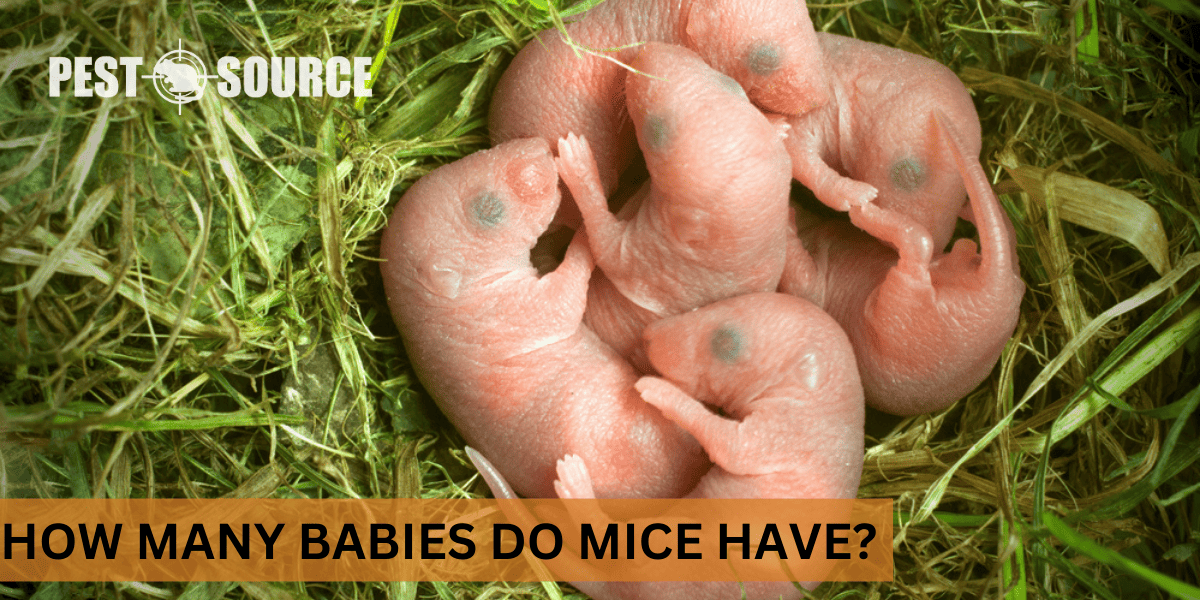Mice are known for their rapid reproduction, with a single female capable of having dozens of babies each year. Find out the specifics of their breeding habits and why this knowledge is essential for controlling mouse populations in residential areas.
POINTS
- Mice have a high reproductive capacity, with a female mouse reaching sexual maturity at just six weeks old. She can birth between five and ten litters a year, each containing anywhere from 3 to 14 pups. This rapid reproduction cycle means a small mouse problem can quickly escalate into a major infestation.
- The gestation period of mice is relatively short, typically between 19 to 21 days. Female mice can mate almost immediately after giving birth, allowing for the possibility of a new litter every 25 to 30 days.
- Baby mice, or pups, undergo rapid development in their first few weeks. They are born tiny, pink, and blind but develop ears by the fourth day, start growing fur around the sixth day, and open their eyes around the 13th or 14th day. They are typically fully weaned by the 21st day.
- There are several myths and misconceptions surrounding mouse reproduction, including the belief that mice lay eggs and that they multiply by spontaneous generation. Mice are mammals and give live birth to their offspring, and they reproduce sexually like other mammals.
- Preventive measures against mouse infestations include sealing cracks and holes in structures, storing food in airtight containers, disposing of trash regularly, using mouse traps or professional pest control services, regularly checking for nests, and keeping yards clean and clear of debris.
What is the Reproductive Capacity of Mice?
The reproductive capacity of mice is astounding, and it’s primarily responsible for their status as one of the most common household pests.
How quickly do mice reach sexual maturity?
Mice reach sexual maturity rapidly. A female house mouse, for example, is ready to reproduce at just six weeks old. This quick maturation process significantly contributes to the mice’s immense breeding capabilities.
How many babies can a mouse have at one time?
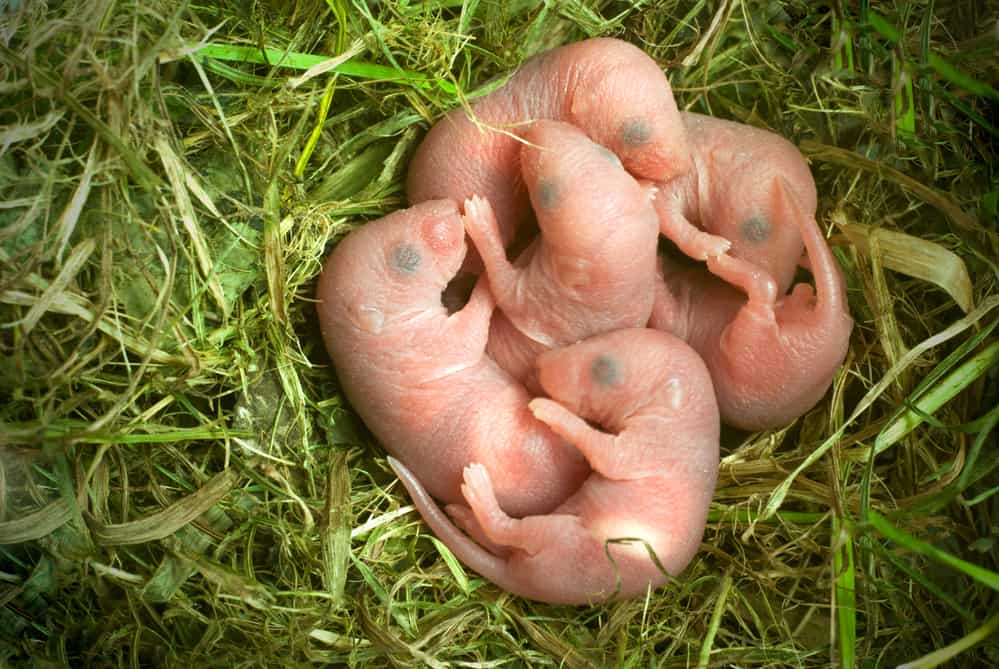
The number of babies a mouse can have at one time, also known as a litter, varies. Generally, a litter can range from 3 to 14 pups. However, the average litter size is often between 6 to 8 pups.
How many babies do mice have in a litter?
As mentioned above, a litter of mice can comprise anywhere from 3 to 14 babies. The exact number depends on several factors, including the mother’s age and health, and the availability of food and resources.
How many litters can a female mouse produce in a year?
A typical female mouse can birth between five and ten litters a year. This prolific breeding cycle is partly due to the fact that a female mouse can mate almost immediately after giving birth — sometimes within just 24 hours.
How often can mice reproduce and give birth?
Mice can reproduce and give birth quite frequently. In fact, a female mouse can birth a second litter in as little as 25 days after the first. This cycle continues until the mouse’s death.
How many babies can a mouse have in a month?
Considering the gestation period and the immediate mating capability after birth, a mouse can potentially have a new litter every 25 to 30 days. This means, in theory, a mouse can have anywhere from 6 to 14 babies in a month.
How many offspring can a single mouse potentially produce in its lifetime?
A female mouse breeds up to 10 times per year with an average of 6 to 8 offspring per litter. Taking the higher value for calculation, that means a female mouse could give birth to 80 baby mice a year. The average lifespan of a mouse is around 1 to 2 years in optimal conditions.
So, theoretically, a single female mouse could potentially produce over 150 offspring during its lifespan. This is why mouse populations can quickly escalate. However, these are ideal numbers. In practice, predation and other environmental factors can significantly lower these numbers.
What factors can increase the reproduction rate of mice?
Several factors can increase the reproduction rate of mice. These include access to abundant food and resources, the absence of predators, optimal temperatures, and living indoors, which allows mice to breed all year long.
Understanding the Typical Mouse Pregnancy
The gestation period, or pregnancy, in mice is relatively short, contributing to their rapid reproduction rates.
What is the mouse gestation period?
The mouse gestation period is typically between 19 and 21 days.
How long are mice pregnant for?
As mentioned above, mice are pregnant for approximately 19 to 21 days.
How soon can a female mouse reproduce after giving birth?
A female mouse can reproduce almost immediately after giving birth, sometimes within just 24 hours. This allows for back-to-back litters with minimal downtime.
What factors influence the number of babies in a litter?
Several factors can influence the number of babies in a mouse litter. These include the mother’s age and health, the availability of food and resources, and the presence of other mice or predators.
How does the indoor and outdoor environment impact the breeding cycle?
Living indoors enhances the breeding capabilities of mice, as they can breed all year long. Outdoors, breeding usually occurs during the spring, summer, and fall. The winter months are typically too harsh for successful breeding.
Characteristics and Development of Baby Mice
Baby mice, or pups, undergo rapid development in their early days. Understanding their growth pattern can provide insights into their lifecycle and behavior.
What do baby mice look like at birth?
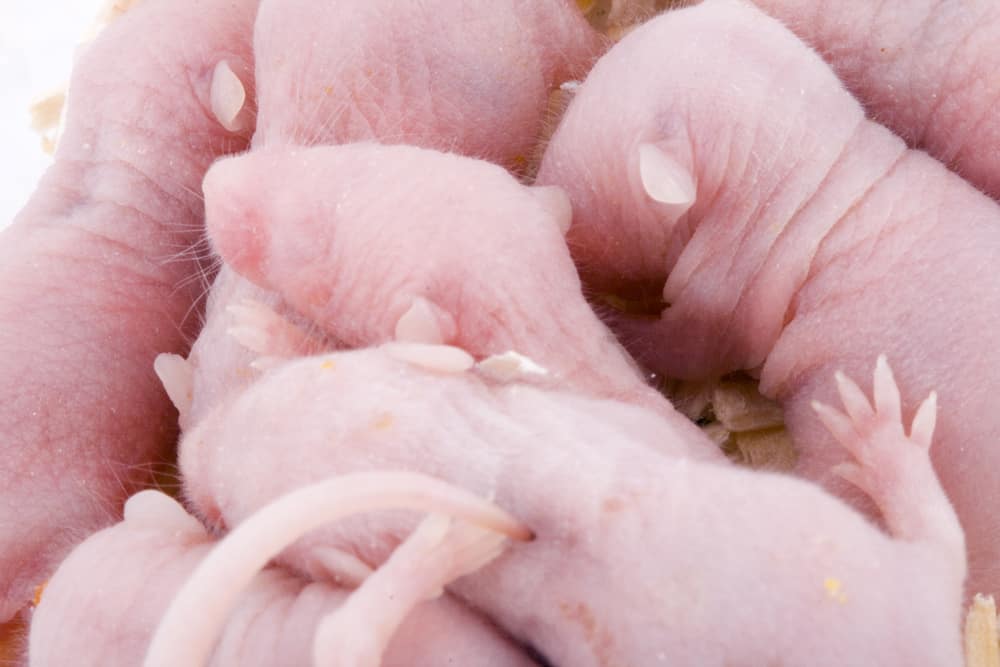
At birth, baby mice are tiny and pink. They’re born without fur, ears, or the ability to see. Their defenseless and blind state makes them highly dependent on their mother for survival.
How fast do baby mice grow and develop?
The growth rate of baby mice is remarkably fast. They undergo major developmental milestones within the first few weeks of their life. For instance, their ears are fully developed by the fourth day, and they start growing fur around the sixth day. By the tenth day, they have a protective coat of fur. However, they don’t open their eyes until around the 13th or 14th day.
What are the major milestones in the development of baby mice?
Here’s a detailed timeline of the major milestones in the development of baby mice:
- Day 1: Birth
- Day 4: Ears fully developed
- Day 6: Begin to grow fur
- Day 10: Protective coat of fur
- Day 13-14: Eyes open
- Day 21: Fully weaned, start to eat solid foods
At what age do baby mice get weaned from their mother?
Baby mice are typically fully weaned by the 21st day or around three weeks old. By this time, they’re ready to start eating solid foods.
What do baby mice eat and when do they start to eat solid foods?
Baby mice start their life by consuming their mother’s milk. Once they’re weaned off, which is typically around the third week, they begin to eat soft foods provided by their caretaker or mother. Eventually, they transition to the same diet as adult mice, which consists of grains, seeds, fruits, vegetables, and occasionally insects and other small animals.
The Dynamics of a Mouse Litter
Understanding the dynamics of a mouse litter can provide insights into mice’s social behavior, survival strategies, and interactions with their environment.
How many mice typically make up a litter?
As mentioned earlier, a litter of mice can vary from 3 to 14 pups, with the average litter size often between 6 to 8 pups.
What is the average mouse litter size, and how can it vary?
The average mouse litter size is between 6 to 8 pups. The litter size can vary depending on several factors, including the mother’s age and health, the availability of food and resources, and the presence of other mice or predators.
Do all offspring from a litter usually survive?
Not all offspring from a litter usually survive. The survival rate depends on various factors such as availability of food, presence of predators, and the health condition of the mother and pups. In harsh conditions, the survival rate can be significantly lower.
Behavioral Aspects of Mouse Reproduction
Mouse reproduction involves specific behaviors that are influenced by their innate instincts, environmental factors, and interaction with other mice.
How do mice mate?
Mice usually mate at night, and the process is relatively quick. Female mice emit pheromones that attract males, and after a short courtship, they mate. The female can mate with multiple males during her fertile period.
When do mice give birth?
Mice can breed throughout the year, but they are more likely to breed in warmer months when there is more food available. In colder months, mice may breed less frequently or not at all.
Mice can give birth at any time of the day or night, although they prefer to do so in dark, quiet places where they feel safe and undisturbed.
Where do mice typically nest?
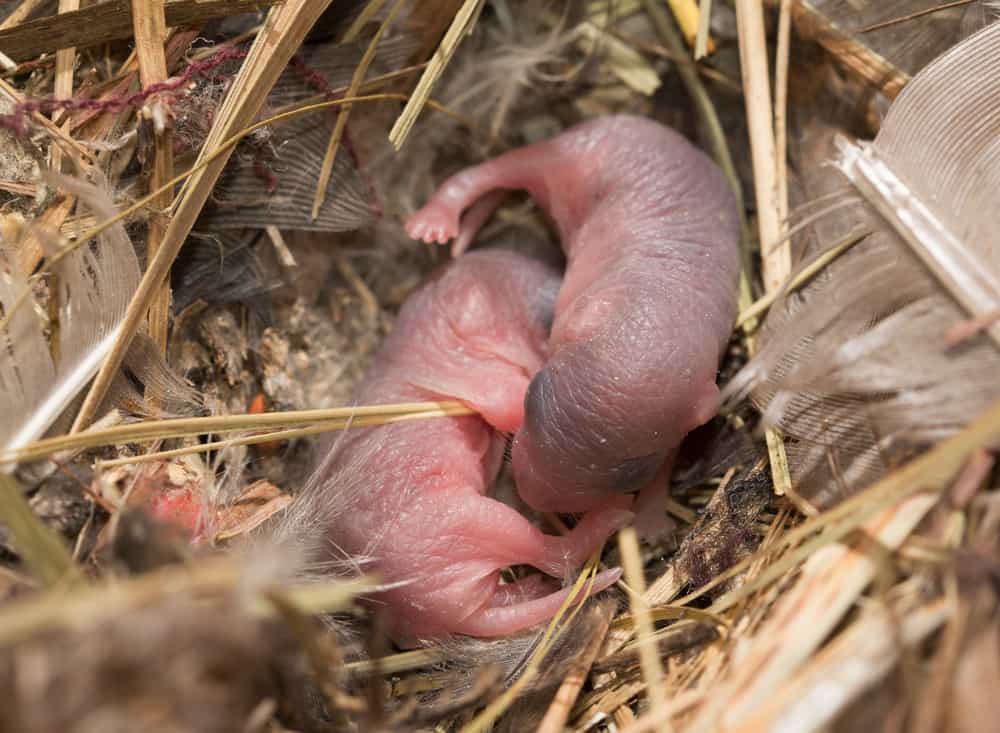
Mice typically build their nests in quiet, secluded areas. These can include:
- Inside walls and under floors in homes.
- In undisturbed materials like storage boxes.
- In areas with dense vegetation, like overgrown grass or bush.
- Near food sources such as kitchens, pantries or storerooms.
- In exterior burrows in the ground, particularly in rural or suburban environments.
Their nests are usually made from shredded paper or other fibrous material mixed with feathers, cotton, and other soft items. Mice prefer warm, cozy, and dark places to build their nests.
Like many animals, mice have a strong instinct to find a safe and sheltered spot for birthing to ensure the survival and well-being of their young. In the wild or in less controlled environments, this also helps to keep them hidden from predators during the vulnerable birthing and early nursing period.
How does the reproductive cycle of male mice compare to females?
Male mice reach sexual maturity around the same time as females and can mate throughout their lifespan, which is typically longer than that of females. However, their reproductive success depends on their ability to compete with other males for access to females.
Myths and Misconceptions Surrounding Mouse Reproduction
Several myths and misconceptions surround mouse reproduction. Let’s debunk a few of the common ones.
Do mice lay eggs?
No, mice do not lay eggs. They are mammals and give live birth to their offspring, much like humans.
How fast are mice, and does this have any relevance to their reproduction?
Mice can run up to 8 miles per hour. While this speed is impressive, it has no direct impact on their reproduction. However, their agility and speed can help them escape predators, increasing their chances of survival and reproduction.
Are there any commonly believed myths about mouse reproduction?
One common myth is that cheese is the favorite food of mice. In reality, mice are omnivores and prefer to eat fruits, seeds, and grains. They will eat cheese, but it’s not their top preference.
Another myth is that mice multiply by spontaneous generation. This theory held that certain living things, like insects and small animals, could arise fully formed from inanimate matter like dust, dirt, or decaying material. Mice were often included in this belief due to their rapid reproduction rates and their habit of nesting in hidden places. This is, of course, false. Mice reproduce sexually, just like other mammals.
The Implications of Rapid Mouse Reproduction
The rapid reproduction rate of mice has significant implications, particularly for homeowners dealing with a mouse infestation.
What does rapid reproduction mean for a mouse infestation in homes or properties?
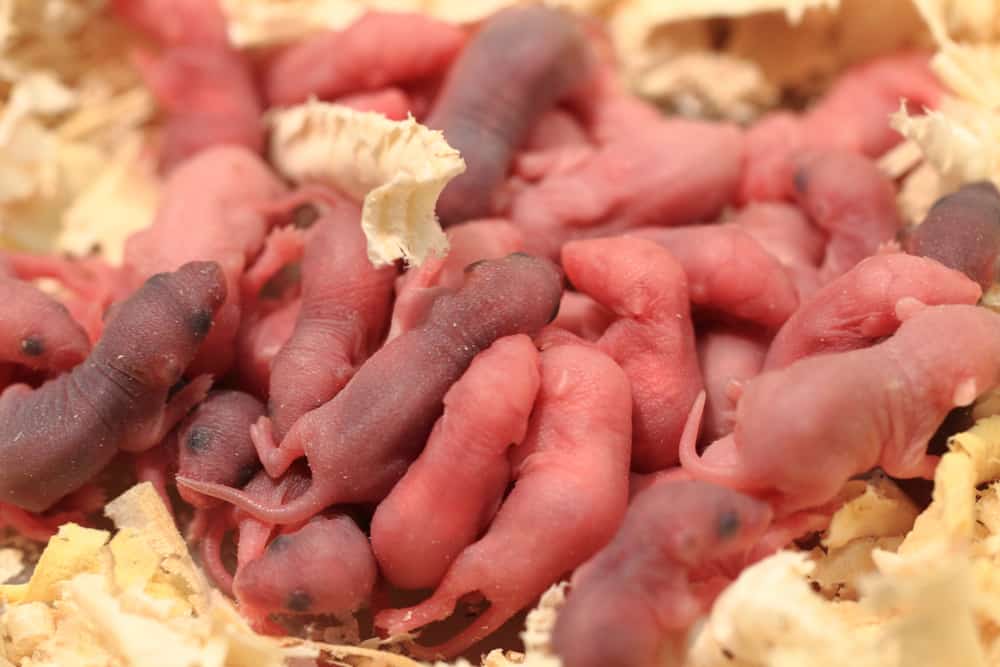
Rapid reproduction means that a small mouse problem can quickly become a large infestation. A single female mouse can produce between 25 and 60 offspring in a year, meaning the mouse population in an infested home or property can escalate rapidly.
How quickly can a small mouse problem escalate?
A small mouse problem can escalate quickly due to the mice’s rapid reproduction rate. If conditions are favorable and there are no effective pest control measures in place, a single pair of mice can theoretically lead to hundreds of mice within a year.
What preventive measures can homeowners take to manage or avoid mouse infestations?
Here are a few preventive measures homeowners can take:
- Seal cracks and holes in walls, floors, and foundations to prevent mice from entering your home.
- Store food, including pet food, in airtight containers to deter mice.
- Dispose of trash regularly and keep your home clean.
- Use mouse traps or hire a professional pest control service if a mouse infestation is suspected.
- Regularly check dark, secluded areas in your home where mice are likely to build nests.
- Keep your yard clean and clear of debris that might provide shelter for mice.

